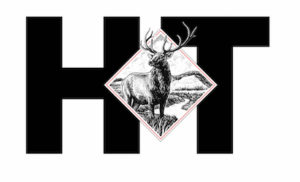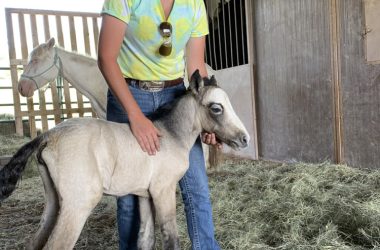RBC | Last month Archaeologist Luke Trout from the Bureau of Land Management’s White River Field Office shared research findings with the White River Alliance in a presentation titled “History in the White River Valley: How Humans Shape Our Landscape,” focusing on the last 200 years of history in the Piceance Basin, part of a larger area that Archaeologists believe has been occupied by Utes and their ancestors for thousands of years.
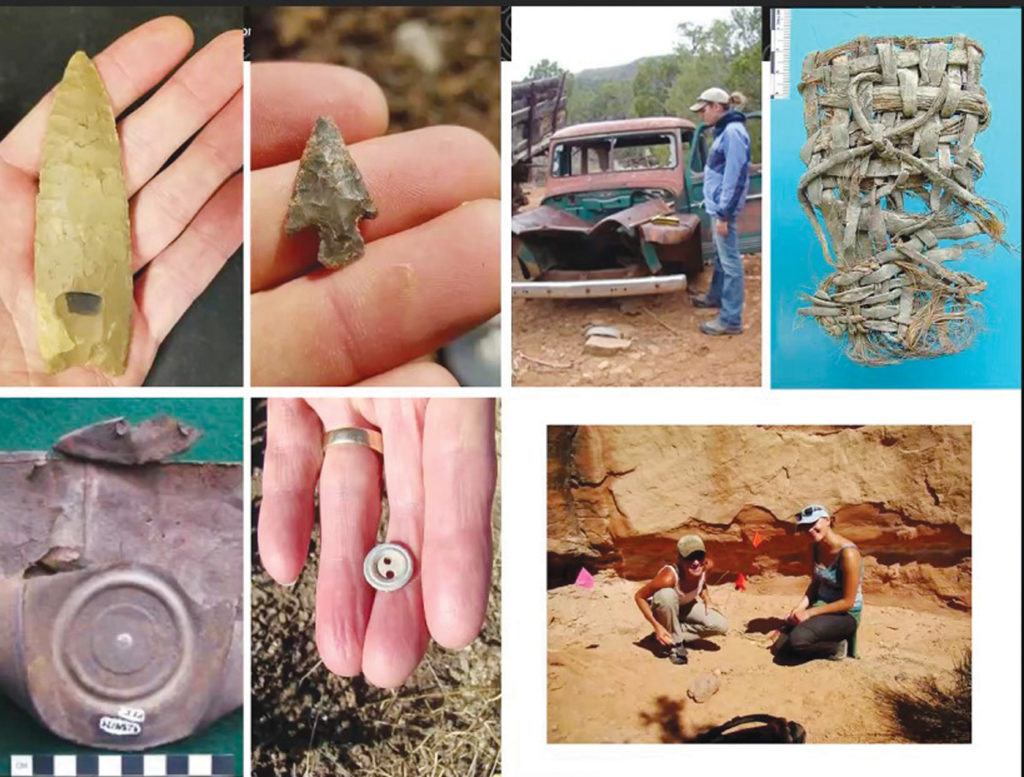
Trout started by saying “the Utes were never a single tribe, they were 12 independent bands that each had their own independent leadership, and the U.S. government ultimately forced them to reorganize into three different reservations.”
Of the 12 bands, three are known to have lived in and/or frequented the Piceance Basin area:
• Yampa-tika – translates to “Yampa-eaters” (later called the White River Utes)
• Parianuch – translates to “Elk people”
• Tabeguach – translates to “Sunny slope people” (later called Uncompahgre)
Ute bands identified themselves by the land or “core area” they came from. The Yampa-tika resided primarily along the Yampa and White Rivers, the Parianuch resided in the La Sal Mountains (called Elk Mountains in Ute), and the Tabeguach lived on the Uncompahgre Plateau. “They were highly mobile, but always knew where they were in reference to their core area,” explained Trout.
LOWER, MIDDLE AND UPPER EARTH LANDSCAPES
Utes identified landscapes in three main ways, “Lower Earth” for low valleys and canyons, such as Yellow Jacket pass, “Middle earth” for mountain valleys and parks, and foothills such as Browns Park, and “Upper Earth” for high rocky ridges and peaks like Trapper’s Lake.
“The seasonality of each eco-zone ties in to these areas as well, from the Ute perspective,” said Trout, further elaborating that Utes’ land identification systems were also tied to the types of plants and animals that could be harvested and processed for food, medicine, crafting materials and otherwise.
For example, the “Pinyon Juniper Zone” (5,000–7,000 feet in elevation) was known for goosefoot, prickly pear, wild onions, potatoes, and carrots. The “Pine Oak Zone” (6,500–8,000 feet) contained grass seeds, ponderosa cambium, Gambel oak acorns and a variety of berries. In the “Fir-Aspen Zone” (8,000–9,500 feet) Utes harvested tree sap to waterproof baskets, and found other plants like gooseberries, currants, wild raspberries and pigweed. They primarily hunted deer, but could also go after rabbit, antelope, mountain sheep and “the occasional bison.” In the “Spruce-Fir Zone” (8,000–10,000 feet) Utes found strawberries, huckleberries, currant and avalanche lilies, as well as various big and small game.
THE GRAND CIRCUIT
The changing seasons greatly influenced behaviors of the Utes, affecting geographic location, diet, cultural activities and more. Larger rendezvous often took place in the Winter, sometimes involving multiple tribes. Fur trader William Ashley, traveling through the area in 1820 noted multiple tribes wintering together. In addition to trading in the winter, Tribes would tell stories, work on creating baskets and arrows, process hides and meats, and generally get ready for the spring in anticipation of replenishing their food reserves.
In April/May, as spring rolled around and the snow began to melt, new foraging opportunities arose allowing Utes to harvest plants like wild onions and garlic. Spring may have also been a time when prescribed burns were common. “We know for a fact that they did prescribed burns of their own, to improve the forage for big game,” Trout said. Another benefit of prescribed burns was that new plants would “come back as straight shoots” the following year, making them perfect for baskets.
In early summer, Utes started harvesting wild potatoes (also known as spring beauty) and wild carrots (called yampa)–some of the primary food sources for Utes in the White River/Yampa area. Berries and nuts were ready for harvesting later in the summer through fall. One settler’s journal entry in September 1776 describes coming across three Ute women who were looking for “Chokecherry, Garambullo limes and Pinyon nuts.” Trout pointed out that archeologists believe the settler who wrote the entry was likely in the Colorado River Valley, near what is now the town of Parachute.
Activities noted in the fall included foraging basket making materials and hunting deer before winter arrived. Some year-round activities were collecting minerals for paint (to use in petroglyphs, writings and other art) and traveling to collect salt from known natural sources, including one as far away as Denver.
PLACE NAMES
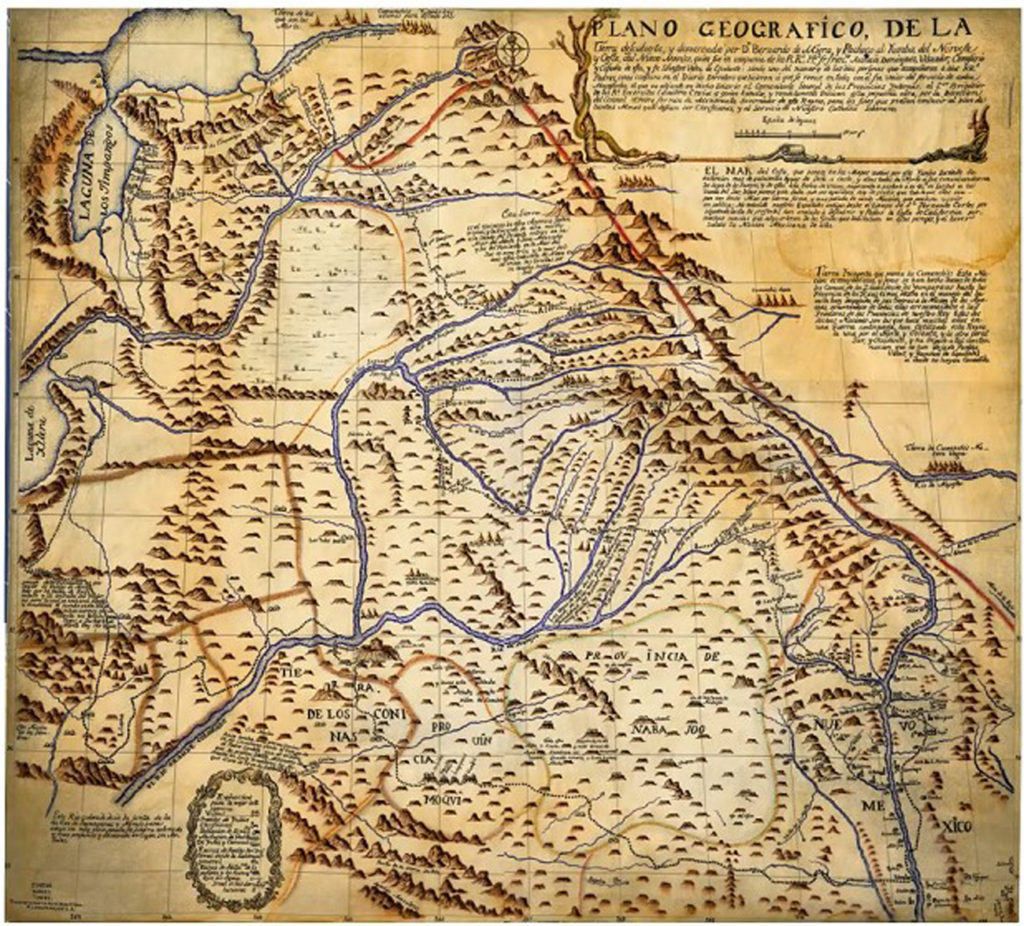
Trout’s research endeavors have also touched on the origins of prominent place-names, such as the White River. According to Trout, there are “many answers” about where the name came from, though he said there are correlating themes all pointing to the name originating from the Ute language. Trout said historical accounts of settlers, traders, and explorers note that the Utes referred to the river as “smoke water,” and “white water.” Other themes were “steaming river” and “shining river.” The original Ute word for any of these potential names however, is still unclear. “Whether we’re talking about streaming river, smoking river, white river … in Ute language that might all be a pretty similar word,” said Trout. “Even glittering or shining river might all be associated with the base word ‘white,’ so it does all kinda boil down to ‘White River,’ originating from the Utes,” said Trout. He also mentioned the historical records do indicate the name “White River” has been in common use since at least 1850, if not earlier.
Strawberry Creek is an example of a name with more direct origins, according to an 1877 map drawn by F.V. Hayden. The map denotes a creek north of Powell Park as an original Ute word that translates to “Red-Berry” likely in the northern Ute Dialect.
1879 WHITE RIVER AGENCY REPORT
A report of the White River Agency and surrounding area from 1879 includes a map with names specific to the area, including an original Ute name for what is now called Coal Creek.
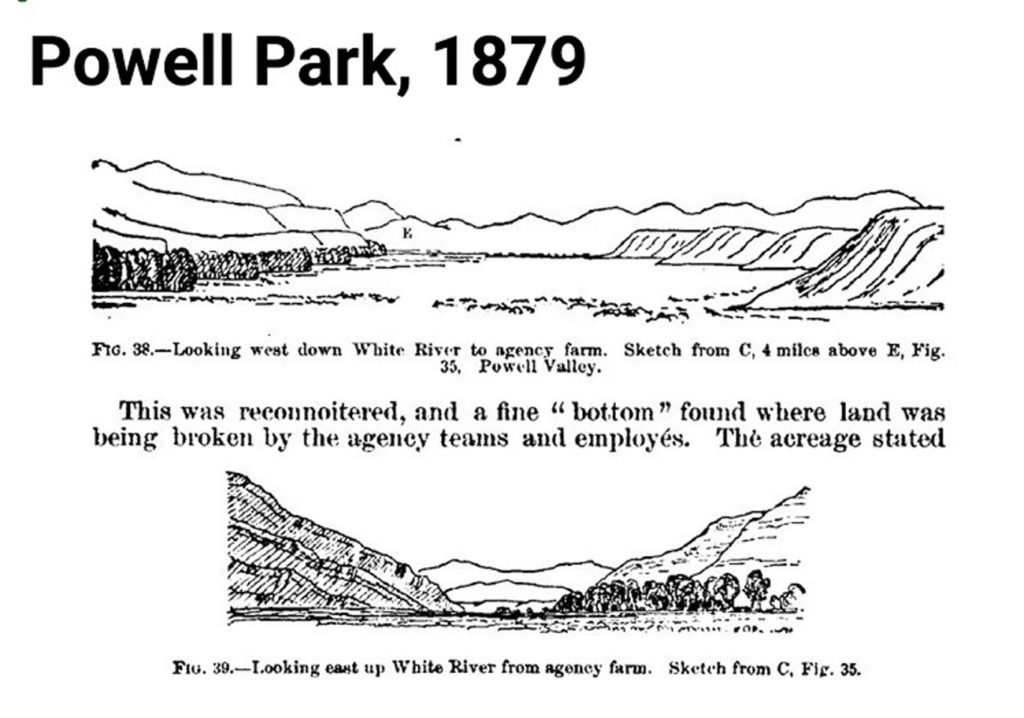
Some other interesting facts noted in the report include that the entire White River was “one continuous line of Cottonwood trees.” The report also includes information about the Utes, who at the time called Powell Park “the Valley of the One-Armed Man” referencing settler/explorer John Wesley Powell who had lost his arm in the Civil War. Powell and others in the White River Agency wintered in the valley in 1868 due to 1-2 feet of snow in the location of the original White River Agency. Trout noted the Utes objected to Powell and others coming into the area early on, before Nathan Meeker ever showed up.
CHANGES SET IN MOTION
Sketches and accounts from pioneers help describe how the land has changed since the late 1800s into the early 1900s when some of the first documented photos of the area were taken. Starting in 1881 the White River valley was continuously farmed and grazed. By 1890, Cottonwoods lining the White River had all been cut down for firewood and lumber. Trout explained prior to being cut down the trees’ shade had helped cool down the water in the river, improving habitat for fish and other wildlife.
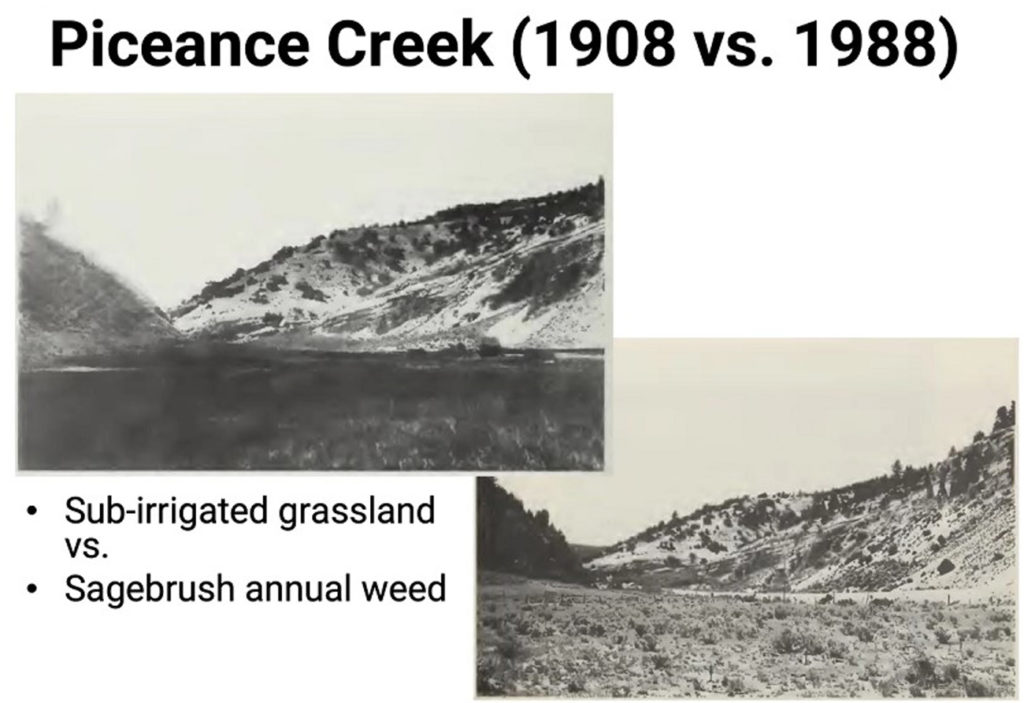
The riparian areas around the White River changed dramatically from 1910-1920, as heavy underbrush (willows, sumac, and similar vegetation) surrounding the River was cleared. An increase in erosion following the removal of natural vegetation eventually led to the deliberate introduction of Russian olive and Tamarisk in the 1940s, in an effort to curb erosion. Trout told the HT that Cottonwoods seem to be coming back along many areas of the river, and said generally the landscape had “stabilized.”
The foothills in the White River Valley by all accounts have remained largely unchanged since the late 1800s.
Photos taken in the 1920s also indicate that lands surrounding many of the White River Tributaries like Piceance and Strawberry Creeks were grasslands. Historic farming practices and drought in those areas by the late 1920s and onward also played a role in changing the landscape to what we recognize today as a drier, weedier landscape.
UTE ‘WAR’ OF 1887
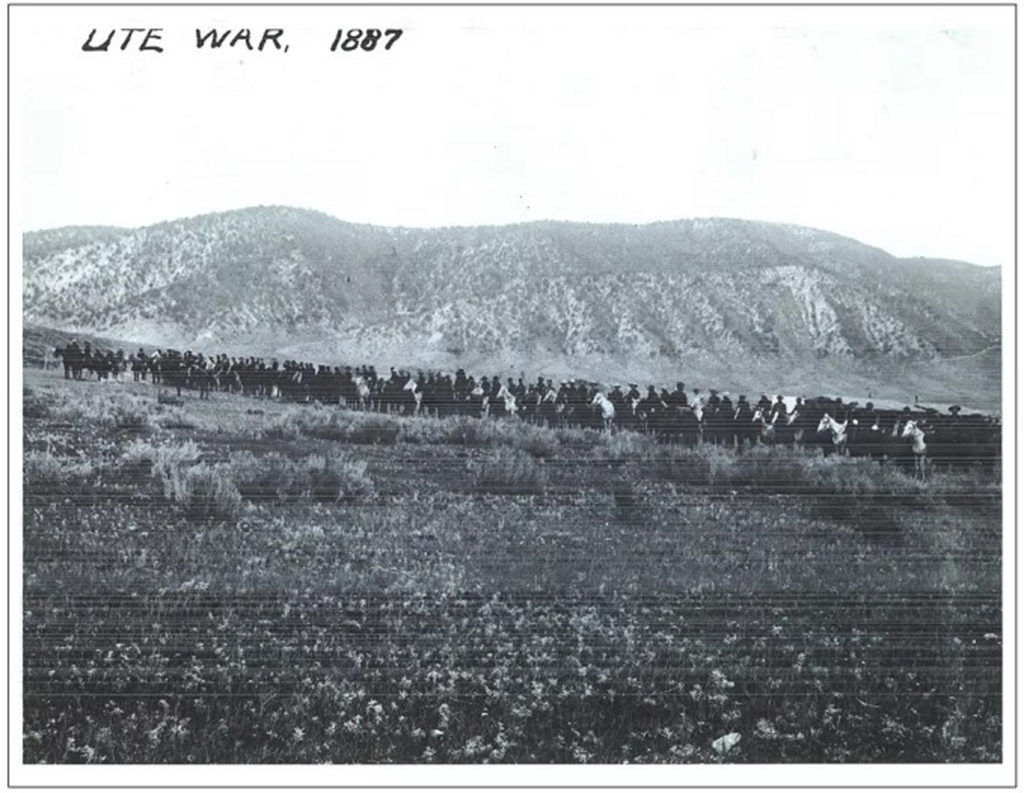
Trout explained that even following the Meeker Massacre, many of the pioneer families in the area still had positive relationships and interactions with the Ute bands, since most people considered the massacre to be “provoked.” An event later described by some locals as the “White Man’s War” had a much more drastic negative impact on the relationships between pioneers and Ute bands. Trout described it as “a very fake war” made up by Sheriff Kendall, who Trout said wanted positive publicity. Following the incident, local residents and state/national newspapers disagreed about the necessity of Kendall’s actions.
According to Trout, a group of Ute families coming through Meeker in 1887 to go upriver were described by the sheriff as a “war party,” and were eventually chased out of the area, past Rangely. “They lost a lot of their horses, and so it was totally traumatic for the Utes at that point” said Trout, emphasizing that many people looked back on the sheriff’s actions unfavorably.
1,700 YEARS
Trout noted his research so far had covered more than 1,700 years of history in the Piceance Basin area, noting that is has “among the highest density of wiki-ups in the entire state of Colorado” since the temporary shelters can last a long time, with the oldest documented wiki-up still standing estimated to be from the late 1700s. Alternatively the most recent wiki-up constructed in the area was around 1919, well after the reservation period of 1881, indicating that Utes were still coming back to the area to hunt decades after being officially moved to reservations.
Trout also listed some sources for anyone who wants to learn more about the Utes including A History of Utah’s American Indians by Forrest S. Cuch, A History of the Northern Ute People by Fred A Conetah, and Colorado Prehistory: A Context for the Northern Colorado River Basin by Alan D. Reed and Michael D. Metcalf.
By LUCAS TURNER | [email protected]om
